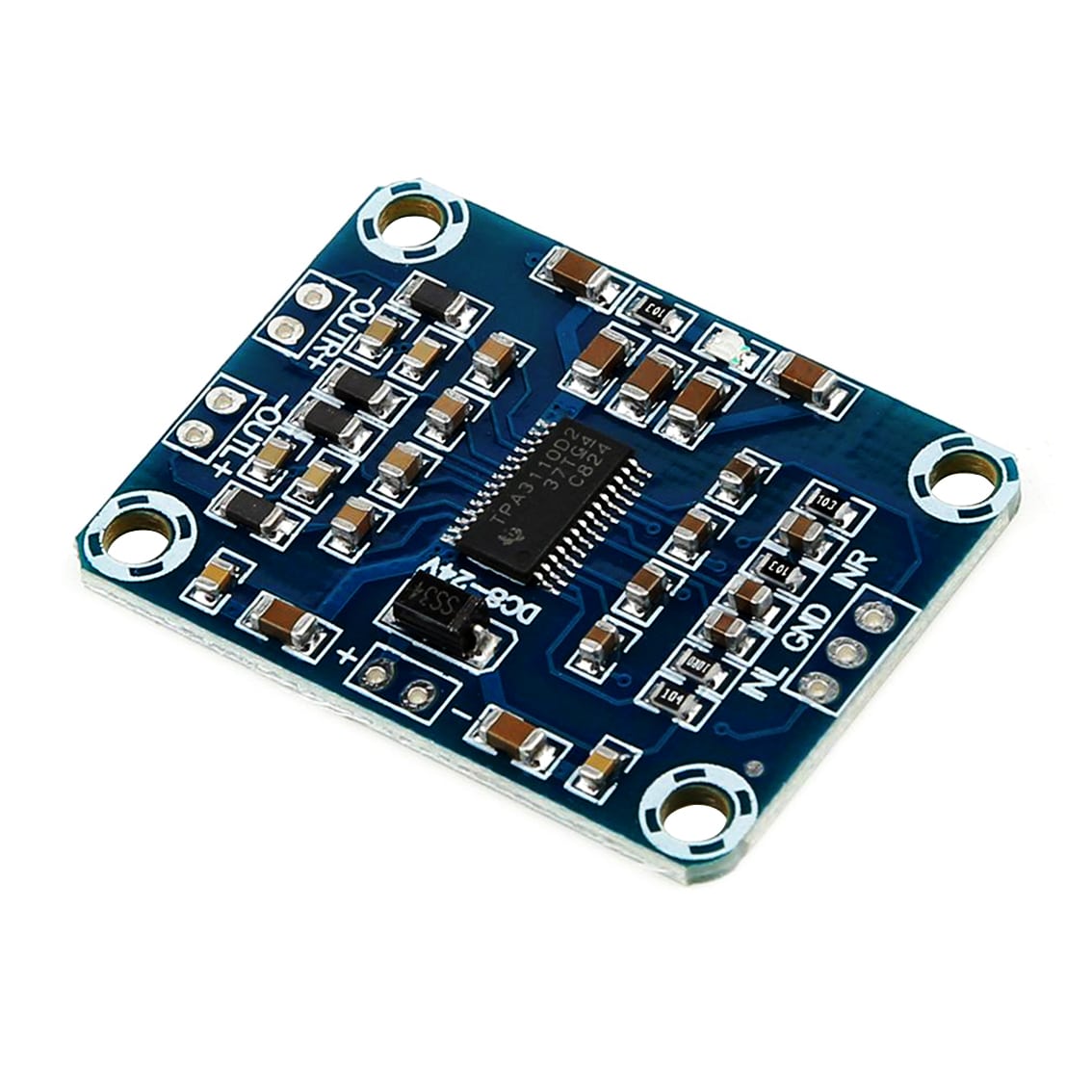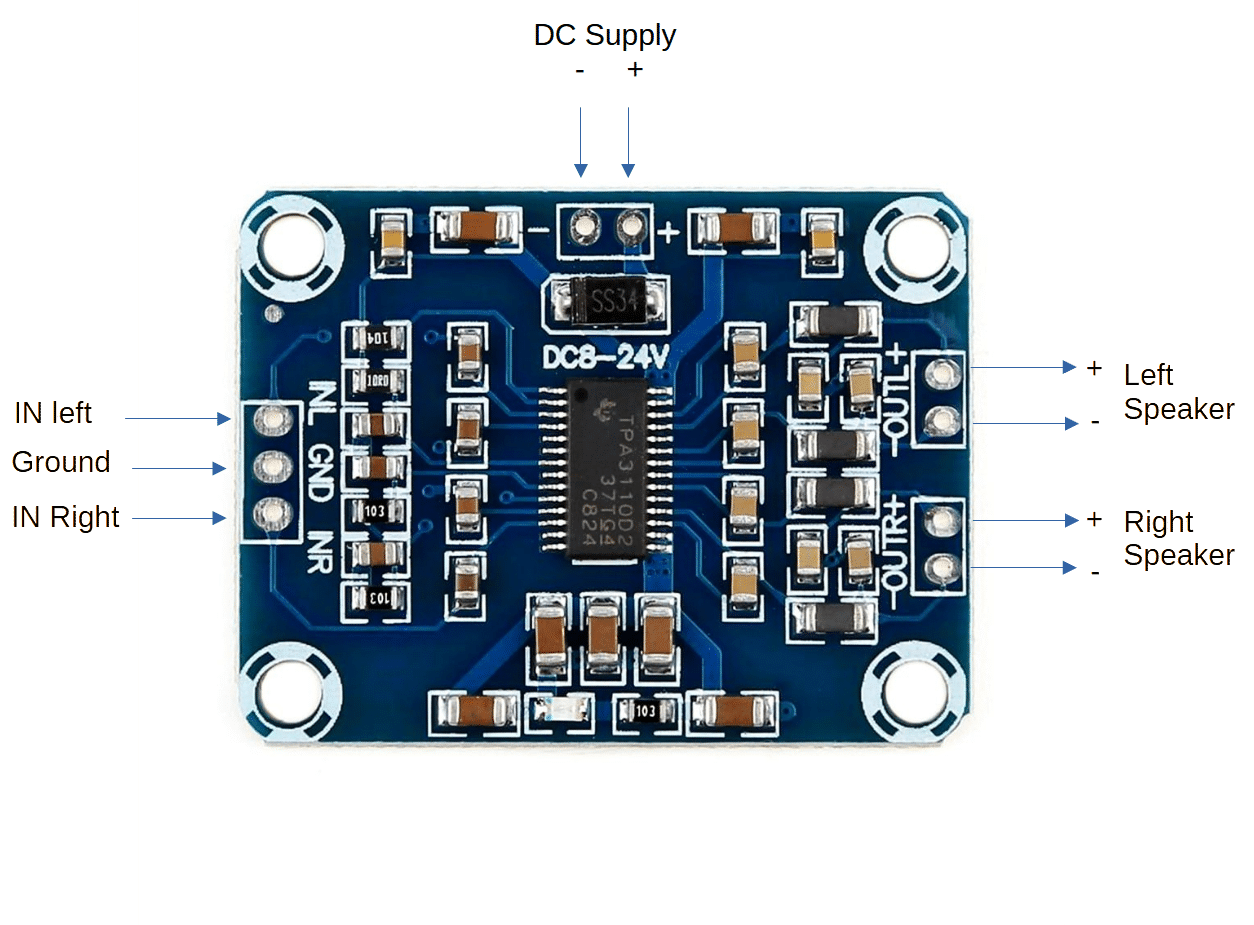TPA3110 Digital Audio Stereo Amplifier Board HW-714 – User’s Guide

TPA3110 Digital Audio Stereo Amplifier Board HW-714 – User’s Guide
Overview
The HW-714 module is a compact, efficient Class D stereo amplifier based on the TPA3110D2 chip, capable of delivering 2 × 15W output at 8Ω speakers. It’s ideal for portable speaker builds, desktop audio systems, and embedded sound applications.
Specifications
| Feature | Details |
|---|---|
| Chipset | TPA3110D2 |
| Output Power | 15W × 2 @ 8Ω, 12V input |
| Voltage Range | 8V – 18V DC |
| Efficiency | Up to 90% |
| Audio Input | 3-pin header (L, R, GND) |
| Speaker Output | 4-pin header (L+, L−, R+, R−) |
| Dimensions | ~45mm × 35mm |
| Protection Features | Over-voltage, over-current, thermal shutdown |

Power Supply
- Recommended Voltage: 12V DC regulated
- Current Requirement: ≥2A for full power output
- Polarity: Center-positive (if using barrel jack)
Use a clean, stable power source to avoid audio distortion or damage.
Speaker Connection
- Connect L+ / L− to the left speaker
- Connect R+ / R− to the right speaker
- Use 4Ω–8Ω speakers rated for at least 15W
Audio Input
- Use the 3-pin header for line-level input:
- L = Left channel
- R = Right channel
- GND = Ground
- Compatible with:
- MP3 players
- Smartphones
- DACs
- Arduino audio shields
Setup Instructions
- Mount the board securely in your enclosure.
- Connect speakers to the output terminals.
- Wire your audio source to the input header.
- Apply power via barrel jack or terminal block.
- Test audio at low volume first, then adjust.
Safety & Handling
- Avoid shorting speaker outputs.
- Do not operate in humid or wet environments.
- Keep metal objects away from the board to prevent shorts.
- Ensure proper ventilation to avoid overheating.
Troubleshooting
| Issue | Possible Cause | Solution |
|---|---|---|
| No sound | Loose input or speaker wires | Check all connections |
| Distorted audio | Overdriven input or low voltage | Lower volume / use stable PSU |
| Board overheating | Insufficient airflow | Add heatsink or ventilation |
| One channel silent | Faulty speaker or wiring | Swap speakers to isolate issue |
